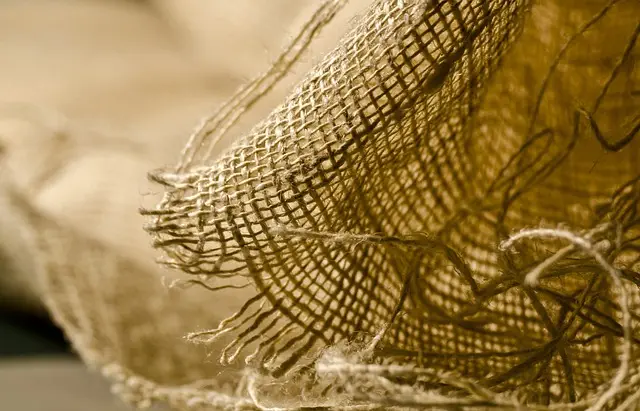Studies indicate that both Red Bali and Maeng Da kratom strains possess significant anti-inflammatory properties due to their alkaloid content, with Red Bali being particularly high in 7-Hydroxymitragynine and Maeng Da containing a balanced profile including mitragynine. While Red Bali is known for its sedative and pain-relieving effects, which are beneficial for inflammation reduction, Maeng Da offers a combination of energy enhancement and pain relief without sedation. The key alkaloids in both strains have been studied for their anti-inflammatory impact, with Red Bali's higher concentration of 7-Hydroxymitragynine and Maeng Da's overall alkaloid balance potentially offering different benefits to users. Individuals with chronic inflammatory conditions like arthritis and fibromyalgia have reported anecdotal evidence of relief from these conditions using both strains, choosing between them based on their specific needs and preferred effects. It's important for individuals to consider their personal tolerance and consult healthcare professionals before using kratom, as the choice between Red Bali and Maeng Da should be personalized for optimal anti-inflammatory support.
Exploring the therapeutic potential of natural supplements, this article delves into the anti-inflammatory benefits of Kratom, specifically examining Red Bali and Maeng Da strains. Understanding their alkaloid profiles and comparing their effects offers insight into their inflammation-reducing capabilities. A comprehensive look at user experiences complements scientific analysis, highlighting the practical application of Red Bali vs. Maeng Da in managing inflammatory conditions. Join us as we uncover the efficacy of these Kratom strains in alleviating inflammation and enhancing overall well-being.
- Unraveling the Potency of Red Bali and Maeng Da Kratom in Inflammation Reduction
- Comparative Analysis: Alkaloid Profiles and Anti-inflammatory Effects of Red Bali vs. Maeng Da
- User Experiences and Anecdotal Evidence on Inflammation Reduction with Red Bali and Maeng Da Kratom
Unraveling the Potency of Red Bali and Maeng Da Kratom in Inflammation Reduction

Studies have begun to shed light on the anti-inflammatory properties of kratom, with particular focus on strains such as Red Bali and Maeng Da. Red Bali kratom, recognized for its sedating and analgesic effects, has been observed to possess significant anti-inflammatory action. This is attributed to its alkaloid composition, particularly 7-hydroxymitragynine, which plays a key role in modulating inflammation within the body. The strain’s ability to inhibit certain enzymes and cytokines involved in the inflammatory response makes it a subject of interest for those seeking natural relief from inflammation-related conditions.
In contrast, Maeng Da kratom is another potent strain, often highlighted for its balanced effects of energy and pain relief without the sedating qualities present in Red Bali. Its anti-inflammatory efficacy is also tied to its rich alkaloid profile, with mitragynine being a prominent component. Clinical observations suggest that Maeng Da may offer comparable anti-inflammatory benefits to those of Red Bali, though perhaps through different mechanisms. The choice between Red Bali and Maeng Da for inflammation reduction can depend on individual needs and the nature of the condition being addressed. Users typically experience relief from inflammation with both strains, but may prefer one over the other based on their specific symptoms and desired balance of effects. When considering Red Bali vs Maeng Da for anti-inflammatory support, it is important to assess personal tolerance and consult with healthcare professionals to ensure safe and effective use.
Comparative Analysis: Alkaloid Profiles and Anti-inflammatory Effects of Red Bali vs. Maeng Da

7-Hydroxymitragynine and mitragynine are two alkaloids found in kratom strains, particularly in Red Bali and Maeng Da, which have been the subject of scientific interest due to their potential anti-inflammatory effects. Research has shown that the alkaloid profile of Red Bali kratom includes a significant concentration of these compounds, with 7-Hydroxymitragynine being present in particularly high amounts. This profile is thought to contribute to its potent anti-inflammatory properties, as demonstrated in various studies on both cellular and animal models. On the other hand, Maeng Da kratom, often considered a premium strain, also boasts a robust alkaloid content, with a balance that includes significant levels of mitragynine and 7-Hydroxymitragynine. The comparative analysis of these two strains reveals that while Red Bali may have a slightly higher concentration of 7-Hydroxymitragynine, Maeng Da’s alkaloid profile is more balanced overall, which could influence its anti-inflammatory effects and user experience. Users interested in the anti-inflammatory benefits of kratom might consider both Red Bali and Maeng Da for their potential to reduce inflammation, with the choice between the two potentially based on individual preferences and the desired alkaloid profile.
User Experiences and Anecdotal Evidence on Inflammation Reduction with Red Bali and Maeng Da Kratom

Users who have incorporated Red Bali and Maeng Da kratom into their regimens to address inflammation often report a range of experiences. The natural alkaloids present in these strains are said to offer relief from chronic inflammation, which is particularly prevalent in conditions like arthritis and fibromyalgia. Red Bali kratom has been praised for its relaxing and analgesic properties, with many individuals noting a reduction in joint pain and swelling over time. Its effects are typically described as gentle yet potent, allowing users to manage discomfort without feeling overly sedated. On the other hand, Maeng Da, known as “Pimp Grade” kratom, is celebrated for its balanced alkaloid profile, providing both energizing and pain-relieving effects. Users of Maeng Da often highlight its ability to maintain mental clarity while mitigating inflammation, which can be particularly beneficial for those whose daily activities are affected by such conditions. When comparing Red Bali vs Maeng Da for inflammation reduction, it’s clear that both strains have their advocates, and the choice between them may come down to personal preference and the specific nature of the user’s inflammatory challenge. Anecdotal evidence suggests that both strains can be effective, with Red Bali typically providing a more calming experience and Maeng Da offering a more dynamic balance of pain relief and energy.
In examining the therapeutic potential of kratom, particularly through the lenses of Red Bali and Maeng Da varieties, it becomes evident that these supplements may offer significant anti-inflammatory benefits. The comparison of their alkaloid profiles and the subsequent effects on inflammation reveal distinct properties, with user experiences further corroborating these findings. While Red Bali and Maeng Da present unique advantages in reducing inflammation, individuals should approach their use with caution, adhering to recommended dosages and consulting healthcare professionals. The exploration of Red Bali vs Maeng Da kratom in the context of inflammation reduction underscores the importance of understanding the specific effects of each strain for informed decision-making in natural health practices.






